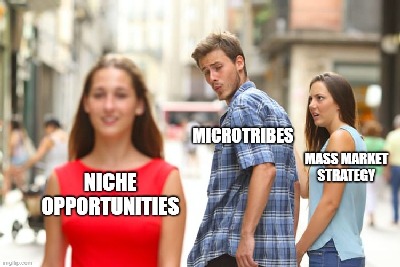For decades, businesses have relied on reaching the widest possible audience with their products. This model, however, is starting to falter.
The reason? An increasing fragmentation of customer needs across the globe. Instead of a mass army of consumers eager to purchase a one-size-fits-all product, businesses are now facing numerous smaller groups of people united by narrow interests and niche preferences. These groups have even earned their own name—“microtribes.”
In my view, this is a continuation of a global trend toward decentralization that is making its way through many areas of human life.
As Dev Patnaik, CEO of Jump Associates, pointed out in Forbes, this emerging trend is significantly complicating life for companies like Disney, Nestlé, and Nike, which have traditionally catered to the mass consumer.
It’s not just consumer-focused giants feeling the squeeze. B2B players like SAP and Salesforce, whose universal CRMs were once the go-to for diverse industries—from oil companies to advertising agencies—are now losing ground. New competitors are carving out pieces of the market by focusing on niche audiences and optimizing their products for specific needs. There are now CRMs designed specifically for landscape designers, and even separate CRMs for companies that specialize in lawn care.
This niching down in the economy isn’t going away. In fact, it’s only going to expand to new markets and products. Patnaik believes that the era of microtribes might require companies to fundamentally rethink how they approach their work.
Instead of chasing that one billion-dollar idea, it might be wiser to look for ten ideas worth a hundred million each. Decentralizing and diversifying your grand plans—if you have any—might be the smarter strategy.
In this decentralized world, flexibility is key. Companies that embrace microtribes and tailor their products to these niche audiences will be the ones that thrive. The trend is pushing businesses to move away from the one-size-fits-all approach, leading them to develop solutions that resonate more deeply with smaller, but highly engaged, audiences.
It’s an exciting time for innovators who are willing to think smaller, more personalized, and more dynamic. Whether you’re a startup or an established player, the shift to serving microtribes can open up opportunities that may have been overlooked in the past.


Leave a Reply
You must be logged in to post a comment.